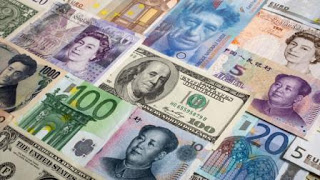
The US dollar has eased to new lows for the week against the euro and yen. There does not seem to be a big fundamental driver. If anything the weakness in German exports, following as it does the soft orders and industrial output data, warns the the European locomotive may be slowing, and would seem to be euro negative.
The soft US bond yields (~2.03% on 10-year Treasury) and the heavier stock markets may be bolstering the yen. Nevertheless, the unexpectedly sharp decline in machine orders, ostensibly a leading indicator of capex, keeps many looking for the BOJ to do more when it meets again at the end of the month.
The next target for the euro is in the $1.1330-$1.1350. It is moving above the trendline drawn off the August 24 (~$1.1715) and September 18 (~$1.1460) and October 2 (~$1.1320) highs. It comes in today near $1.1290. From a technical point of view, the close is important. A close above $1.1330 open the door to $1.1400.
The symmetrical triangle the dollar had been carving out against the yen is at risk of turning morphing into the rectangle consolidation as the apex of the triangle draws near. Initial support for the dollar is seen in the JPY119.30-JPY119.50 area. Regaining a foothold above JPY120 would keep the technical setting neutral.
The German trade surplus narrowed sharply in August. July’s surplus of 25 bln euros fell to 15.3 bln euros in August. Exports plunged 5.2%. The Bloomberg consensus was for a -0.9% decline. It is the biggest decline since January 2009. Imports slumped 3.1%, the most since April 2012. The consensus was for a 0.6% decline.
Separately, news that Germany largest bank will eliminate its dividend rather than raise more capital in the market to cover what may be the largest quarterly loss in at least a decade was warmly greeted by the market. Not only are its shares higher, but despite the small loss in the DAX near midday, financials as a whole are higher (0.35%).













Leave A Comment